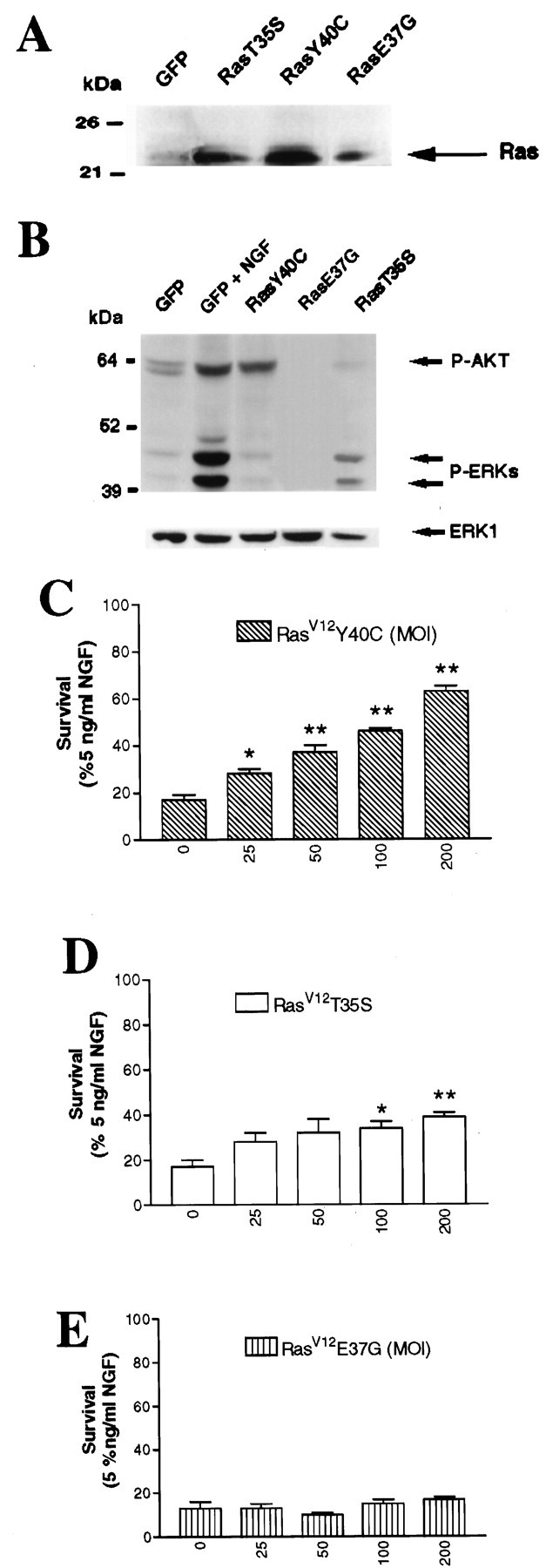Fig. 5.

Ras sustains sympathetic neuronal survival via multiple signaling pathways. A, Expression of Ras effector mutants in sympathetic neurons is shown. Cells were infected with 100 MOI of adenoviruses expressing GFP, RasV12T35S (RasT35S), or RasV12E37G (RasE37G) or with 200 MOI of RasV12Y40C (RasY40C) adenovirus for 3 d. Equivalent amounts of protein were separated by gel electrophoresis, as shown by the bottom bands, and Western blots were probed with anti-Ras. Note that the levels of expression of the different Ras effector mutants are comparable. B, Ras effector mutants differentially activate Ras downstream targets. Sympathetic neurons were infected with 200 MOI of RasV12Y40C, 100 MOI of RasV12T35S, or 100 MOI of RasV12E37G in the presence of 30 ng/ml NGF, and 48 hr after the onset of the infection, NGF was withdrawn. As controls, neurons were infected with 100 MOI of GFP adenovirus and maintained in 10 ng/ml NGF (GFP + NGF). Two days after NGF withdrawal, cell lysates were prepared and normalized for equal amounts of proteins. Phosphorylation of MAPK and Akt was examined on Western blots using anti-phospho-MAPK (P-ERK) or anti-phospho-Akt (P-AKT). Note that RasV12Y40C only induces phosphorylation of Akt, whereas RasV12T35S is able to induce phosphorylation of MAPK (ERK) but not Akt. As expected, RasV12E37G did not stimulate the phosphorylation of these two Ras downstream effectors. C–E, Ras sustains sympathetic neuron survival via PI3-K and Raf but not RalGDS. Sympathetic neurons were prepared and after 5 d in vitro infected with increasing MOIs of adenovirus expressing RasV12Y40C (C), RasV12T35S (D), or RasV12E37G (E), which selectively activates PI3-K, Raf/MEK/MAPK, or RalGDS pathways, respectively. Results from the MTT assay performed 2 d after NGF withdrawal are expressed as the percentage of survival with 5 ng/ml NGF and are means ± SEM of quadruplicate wells from three independent experiments. Values are significantly different from that of NGF-deprived cultures (0 MOI) atp < 0.05 (*) or p < 0.01 (**) (one-way ANOVA and posthoc Dunnett's multiple comparison test).
